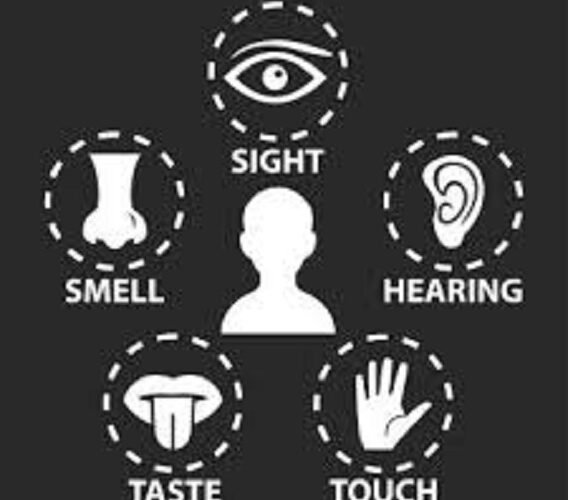By Sujata Muguda, Shreyas WebMedia Solutions
2/5/2024: The idea of indriyas is central to the ancient Indian medical system known as Ayurveda. Our “organs of perception,” or indriyas, are how we perceive the environment. They serve as a link between our internal environment and the outside stimuli we come into contact with.
There are two main categories of indriyas:
Panchendriyas (The Five Sense Organs): These are the physical organs responsible for our basic sense perception:
- Shrotra (Ears): Allow us to hear sounds.
- Twacha (Skin): This enables us to feel touch, temperature, and pain.
- Netra (Eyes): Grant us the ability to see.
- Jihva (Tongue): Enables us to taste.
- Ghrana (Nose): Allows us to smell.
Jnanendriyas (The Five ज्ञानेंद्रिया (Jnanendriyas) – Knowledge Indriyas):
These are the internal organs that process the information received by the panchendriyas. They are not physical organs but rather functions of the mind that interpret sensory data.
- Shabda Jnanendriya (Hearing): Interprets sounds.
- Sparsha Jnanendriya (Touch): Interprets sensations of touch, temperature, and pain.
- Rupa Jnanendriya (Sight): Interprets visual stimuli.
- Rasa Jnanendriya (Taste): Interprets taste sensations.
- Gandha Jnanendriya (Smell): Interprets smells.
When functioning optimally, the panchendriyas and jnanendriyas work together seamlessly, giving us a complete and accurate perception of the world. However, due to various factors like lifestyle choices and environmental influences, these indriyas can become weak or imbalanced, leading to sensory distortions and a disconnect from our surroundings.
Here are some ways to improve the function of both panchendriyas and jnanendriyas:
For the Panchendriyas:
- Healthy Habits: Maintaining a healthy lifestyle with a balanced diet, regular exercise, and adequate sleep nourishes the body and keeps the panchendriyas functioning optimally.
- Sensory Stimulation: Engage your senses with activities that healthily stimulate them. Listen to calming music, spend time in nature to appreciate sights and sounds, and explore different textures through touch.
- Digital Detox: Limit screen time and exposure to excessive noise to prevent overstimulation and allow your senses to rest.
For the Jnanendriyas:
- Meditation: Meditation practices help improve focus and concentration, leading to better interpretation of sensory information by the jnanendriyas.
- Yoga: Certain yoga postures can stimulate different parts of the brain, enhancing the processing of sensory data.
- Mindfulness: Practicing mindfulness involves being present in the moment and paying attention to your senses without judgment. This strengthens the connection between the panchendriyas and jnanendriyas.
- Cognitive Activities: Challenge your mind with activities that stimulate cognitive function, such as puzzles, learning a new language, or reading.
By taking care of both the panchendriyas and jnanendriyas, we can cultivate a deeper understanding of the world around us and refine our perception. This not only improves our sensory experiences but can also lead to greater self-awareness and a more balanced state of mind. Remember, a healthy body and mind are essential for optimal functioning of all our indriyas.



